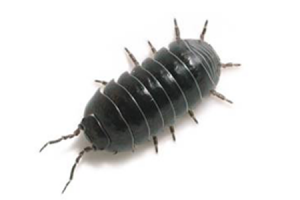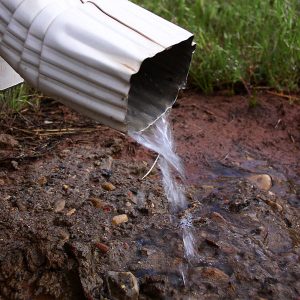
Adult Pillbug
Pillbugs have to walk a fine line between being considered beneficial and being considered a pest. Under normal circumstances, the tiny creatures provide some benefits for the soil in areas where they live. They help to break down decaying plant material and return nutrients to the soil as they feed on fungi and decaying plant materials, improving growing conditions for the next generation of plants. On the other hand, if their numbers get too big they can become a nuisance, or even begin to cause damage to living plants as they go after the fungi that often live around roots.
The main thing to remember when trying to control or remove pillbugs in any area is that they absolutely require moisture to survive. These little bugs are actually a crustacean, just like crabs or lobsters, not insects. They are the only crustacean that has managed to adapt to living on land, but they still require a large amount of moisture to survive. If an area does not provide enough humidity and moisture, they will leave or die, it’s that simple. Pillbugs wandering into homes or buildings often die simply because the environment is too dry for them and they become lethally dehydrated.
If you spot pillbugs in your home, it most likely means there is a large population of them somewhere just outside. This is where you should concentrate your efforts to control or remove them. They are nocturnal creatures, so you may have to hunt a bit to find where they are hiding during the day. They will often spend the daylight hours under objects that help to keep them cool and hydrated. This could mean a decaying piece of wood in the yard, walkway stones embedded in the lawn, bricks or rocks used to line a garden, in and under stacks of firewood, or even under wooden siding on a building that has begun to decay.

Pillbugs love moist areas.
Your best defense is a good offense. Do your best to remove anything that might make a hospitable refuge for the pillbugs in or around your home and you shouldn’t have a problem.
Firewood: Wet wood is a favorite place for pillbugs to invade. The moisture, plus the natural decay of the wood that occurs when it is wet have all the makings for a pillbug party. Wood should be stored off the ground, and as far from buildings as possible.
Compost: Compost piles are another favorite when it comes to a pillbug’s choice of living area. Again, they contain plenty of moisture and the decaying plant materials and fungi are like a never ending buffet. Make sure compost piles are as far from your home as possible.
Yard waste: Remove yard debris, such as fallen branches and leaves, as soon as possible. Pay special attention to areas around the foundation of buildings or near basement windows. Keep these areas clear and dry.
Mulch: Make sure flowerbeds and gardens are not over mulched. Too much mulch will retain a lot of moisture and make a perfect habitat for pillbugs.
Standing water: Make sure there is no standing water accumulating around possible entry points to your home or building, such as near basement windows or cracks in the foundation.
Indoor ventilation: There should be sufficient ventilation in areas such as basements where humidity can build and provide hospitable living quarters.
Residual pesticides: If you’ve tried everything else and you’ve still got more of these little rollie-pollies around than you’d like, you can set up a border between your home and the outside world with outdoor residual pesticides. You should consult with an expert and, of course, make sure you fully understand how your chosen pesticide works and what its possible dangers might be, especially if you have pets. Most experts recommend spraying a treatment one to three feet out around the perimeter of your house and spraying the lower one to three feet of outside walls, paying special attention to areas around low windows and anywhere you see any cracks or openings.

No Comments